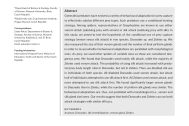Content
Generalist predators have evolved a variety of behavioural adaptations in prey capture to effectively subdue different prey types. Such predators use a conditional hunting strategy. Among spiders, representatives of Gnaphosidae are known to use either venom attack (subduing prey with venom) or silk attack (subduing prey with silk). In this study, we aimed to test the hypothesis of the conditional use of prey capture strategy (venom versus silk attack) in two species, Drassodes sp. and Zelotes sp. We also measured the size of their venom glands and the number of their piriform glands in order to reveal whether behavioural adaptations are paralleled with morphological ones. As prey, we used other spiders of variable sizes as these are considered dangerous prey. We found that Drassodes used mainly silk attack, while the majority of Zelotes used venom attack. The probability of using silk attack increased with predator/prey body length ratio in Drassodes, but not in Zelotes. Then, we disabled silk use in individuals of both species. All disabled Drassodes used venom attack, but about half of individuals attempted to use silk attack first. All Zelotes used venom attack, and none attempted to use silk attack first. We found significantly larger venom glands in Drassodes than in Zelotes, while the number of piriform silk glands was similar. The behavioural adaptations are, thus, not paralleled with morphological (i.e., venom and silk gland size) ones. Our results suggest that both Drassodes and Zelotes can use both attack strategies with similar efficacy.



